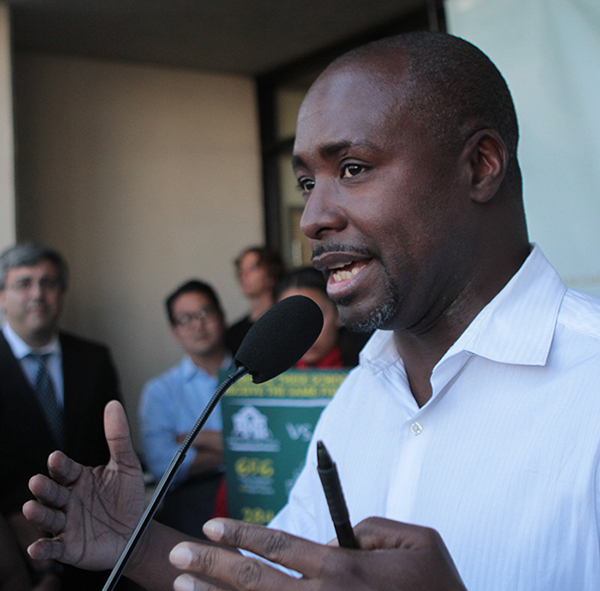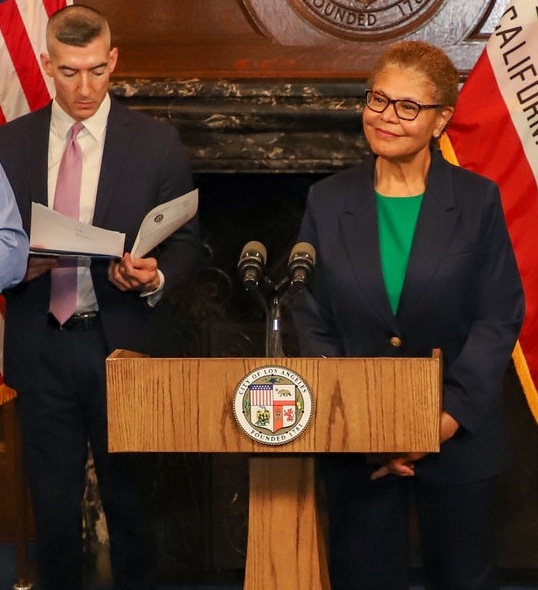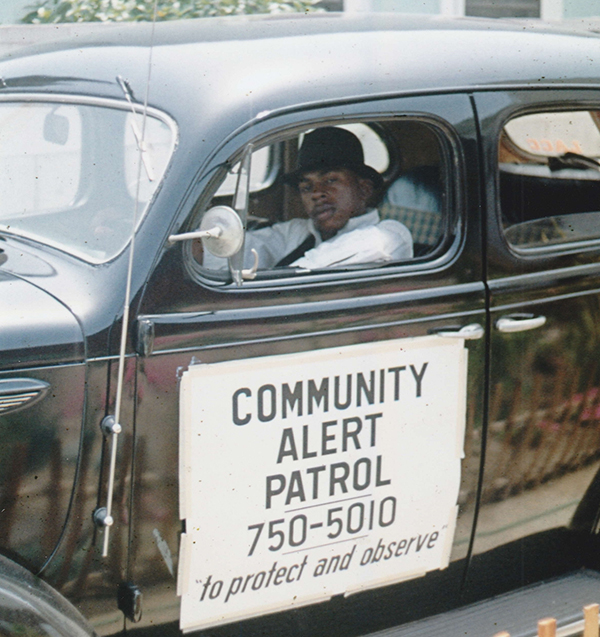Wave Wire Services
LOS ANGELES — The City Council concluded the public comment portion of the redistricting process Nov. 23, with Councilman Marqueece Harris-Dawson making another attempt to move Exposition Park to his district, Council District 8, from Council District 9. The motion failed on an 11-3 vote.
Exposition Park — which includes Los Angeles Memorial Coliseum, the California African American Museum, the Natural History Museum and Banc of California Stadium — was located in Council District 8 for decades until the redistricting process 10 years ago, when it was moved, along with USC, to Council District 9.
“USC and Expo Park, which has been in the 8th District for longer than most of the council has been alive, got taken out of the Eighth District and put in the 9th District,” Harris-Dawson told council members prior to the vote.
Noting that it was a time of racial reckoning in the United States, Harris-Dawson said it was time to return the financial assets to his majority-Black district. He added that he didn’t want to “over-racialize” or divide Los Angeles, but “this one’s obvious.”
“You can’t not fight for this. I can not walk out of here not having put this before each and every one of you,” he told council members.
“At least the African American Museum ought to be in the one Black district,” he added.
The motion only received support from 11th District Councilman Mike Bonin and 4th District Councilwoman Nithya Raman.
Councilman Curren Price, who represents the Council District 8, said he “vehemently opposed” moving Exposition Park out of his district.
“The fact is, CD9 is still the most impoverished district in the city … of both Black and Brown folks, but still the most impoverished and it certainly doesn’t make sense to take assets from a district that’s showing some process, some development,” Price said.
The council held its second and final state-required public hearing on the draft redistricting map ahead of its scheduled vote on Dec. 1 to adopt the new borders.
During both public hearings, several people called in to oppose the map for not returning Exposition Park and USC to Council District 8.
“This is the time to undo the harm done 10 years ago and do justice,” a member of Community Coalition said during the first public hearing on Nov. 10.
This week, a woman called in to urge council members “to stand up for equity and fairness and vote to return USC and Exposition Park to Council District 8.”
“This isn’t political, this is about Black equity, representation and fairness,” the woman said.
A person identified as Tyler calling in as part of Black Lives Matter said, “It’s so important that the majority Black district (Council District 8) has those financial assets within its power.”
Others called in to support the assets staying in Council District 9, saying the district is the poorest of all the city’s 15 districts.
The council advanced the draft map Nov. 9 following a week in which council members made significant tweaks to a map originally drafted by a civilian redistricting commission. City Council President Nury Martinez had blasted the commission’s original map, saying the changes it proposed for council districts “confused and alienated thousands.”
The council’s significant changes to the civilian commission’s recommended map came amid calls from many — including the commission itself — to change the city’s policy in the future to allow an entirely independent body to handle the redistricting process.
In the commission’s recommendations submitted to the City Council, it called for an independent body to redraw the borders in 2031.
“This commission over the last year confirmed that the quasi-independent nature of the advisory commission simply does not work,” commission Chairman Fred Ali told council members. “It’s time for an independent, rather than advisory, commission to assume responsibility for redistricting for the good of our city.”
The Redistricting Commission uses data from the U.S. Census to update the city’s districts, with each council member representing about 260,000 people.
Ali told council members on Nov. 2 that 15,000 people offered comment during the process, but he noted challenges during the process, including the COVID-19 pandemic, census data being delayed by five months and a “historic undercount of certain communities” within that data.
Martinez said the commission’s map reflected an undercount she attributed to the Trump administration’s failed attempt to add a citizenship question to the census and the former president’s confusing messaging on the census’ deadline.
“Los Angeles’ numbers are simply not accurate,” Martinez said. “Look around you. We did not get whiter and we did not get wealthier. This is not the Los Angeles that I see around me.”











